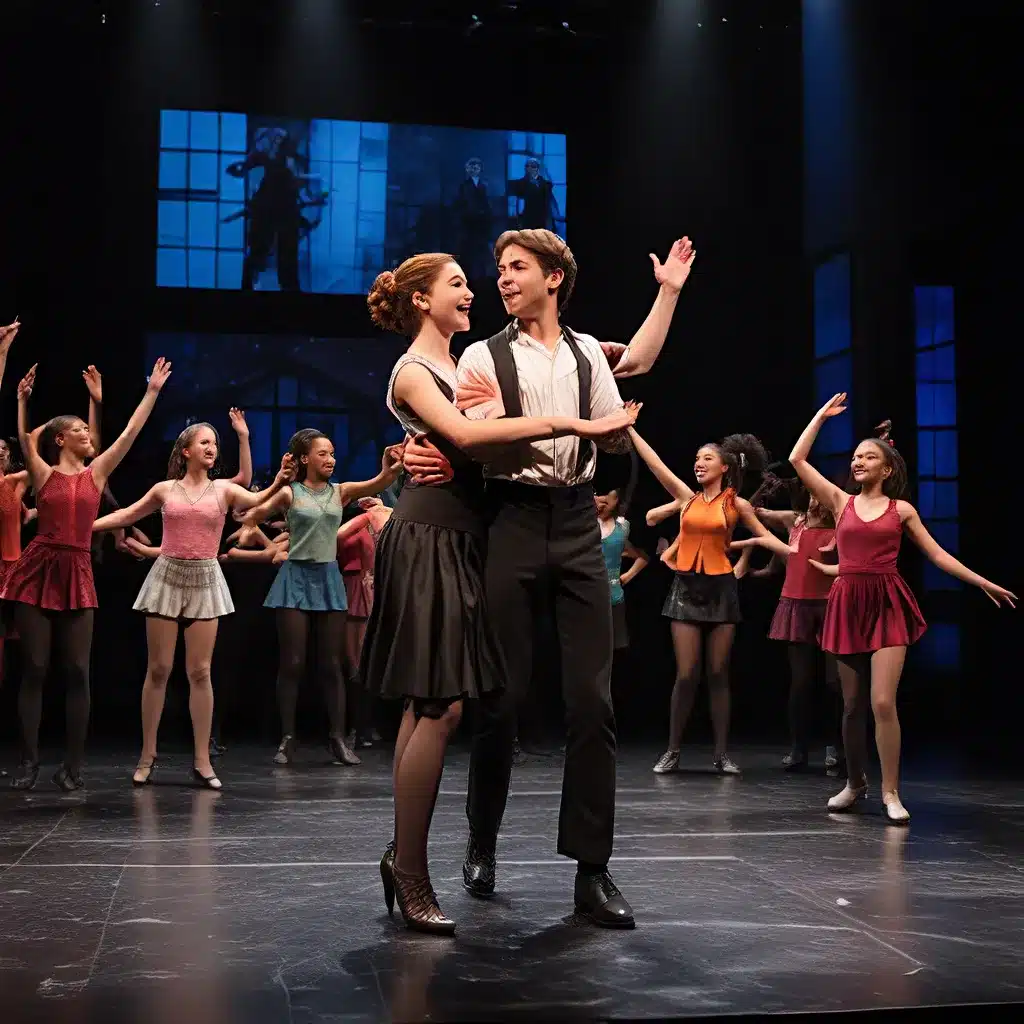
The Technological Transformation of the Performing Arts
As an educator and researcher at the intersection of music, technology, and the performing arts, I’ve had a front-row seat to the profound ways in which technology is reshaping the landscape of musical theater education and performance. It’s an exciting time, filled with both challenges and incredible opportunities for those of us who are passionate about this dynamic art form.
When I first started my journey in the world of musical theater, the tools and technologies available to students and educators were quite different from what we have today. Back then, the idea of incorporating advanced multimedia, virtual exchanges, and cutting-edge design software into the curriculum would have seemed like something out of a science fiction novel. But fast forward to the present, and these technological marvels have become integral parts of the modern musical theater experience.
Embracing Advanced Multimedia Technologies
One of the most striking transformations I’ve witnessed is the way SMTD, the School of Music, Theatre & Dance at the University of Michigan, has embraced advanced multimedia technologies to enhance the learning and performance experiences of its students. As noted in the Michigan Muse article, “SMTD Embraces Advanced Multimedia Technologies Benefiting Students, Faculty, and Audiences,” this department sits “squarely at the intersection of technology and performance.”
From virtual reality-powered set designs to immersive audio environments, the students at SMTD are being exposed to cutting-edge tools that are pushing the boundaries of what’s possible in the world of musical theater. I’ve had the privilege of collaborating with some of these students on projects that blend music, technology, and performance in truly innovative ways.
Fostering Global Connections through Virtual Exchanges
Another area where technology has had a profound impact is in the realm of global collaboration and cultural exchange. The Michigan Muse article highlights the “Award-Winning Virtual Exchanges” that have become a hallmark of SMTD’s educational programs. These virtual events allow students to connect with their peers from around the world, sharing ideas, techniques, and perspectives that enrich the learning experience.
I’ve seen firsthand the power of these virtual exchanges in my own work with the GiMaT program at SMTD, where young musicians and technologists come together to explore the intersection of music and technology. The ability to collaborate with peers from diverse backgrounds and cultures has been invaluable, sparking new ideas and inspiring students to push the boundaries of what’s possible.
Embracing High and Low-Tech in Design and Production
The integration of technology into musical theater education extends far beyond the classroom and performance stage. As the Michigan Muse article notes, there’s a “Mix of High and Low Tech in Costume and Scenic Design” that is transforming the way these critical elements of a production come to life.
From the use of advanced 3D modeling software to the incorporation of traditional handcrafted techniques, the design process has become a fascinating blend of the digital and the analog. I’ve witnessed students grappling with the challenges and opportunities presented by these new tools, learning to balance the practical needs of a production with the creative potential of technology.
A Pandemic-Driven Shift Towards Flexibility
One of the most significant ways in which technology has impacted musical theater education is in the realm of flexibility and adaptability. The Michigan Muse article touches on how a “Pandemic Necessity Becomes a Permanent Option,” highlighting the ways in which SMTD has embraced remote and hybrid learning approaches to ensure continued access to high-quality education and performance opportunities.
This shift towards greater flexibility has been a game-changer, not just for SMTD, but for musical theater programs across the country. By leveraging technologies like videoconferencing, virtual rehearsals, and online collaboration tools, students have been able to maintain their artistic momentum and continue their studies, even in the face of unprecedented challenges.
The Intersection of Tradition and Innovation
As I reflect on the remarkable technological advancements that have transformed musical theater education, I’m often struck by the delicate balance between tradition and innovation. Dean David Gier of SMTD eloquently captures this in the Michigan Muse article, noting that the school “explores the ways technology can enhance scholarship and the performing arts” while also maintaining a deep respect for the rich history and cultural heritage of the art form.
It’s this interplay between the old and the new that fascinates me the most. I’ve seen students who are steeped in the classic techniques of musical theater seamlessly integrate cutting-edge technologies into their work, creating truly breathtaking and boundary-pushing performances. And in doing so, they’re not just shaping the future of the art form, but also preserving and honoring its past.
The Future of Musical Theater Education
As I look ahead to the future of musical theater education, I can’t help but feel a sense of excitement and anticipation. The possibilities that technology presents are truly limitless, and I’m eager to see how the next generation of artists and educators will continue to push the boundaries of what’s possible.
Will we see virtual reality-powered performances that transport audiences to fantastical realms? Will advanced AI systems help to generate new and innovative musical compositions? Or will we witness the integration of holographic projections and interactive set designs that redefine the very nature of the theatrical experience?
Whatever the future may hold, one thing is certain: the intersection of technology and musical theater education will continue to be a dynamic and constantly evolving landscape, filled with both challenges and incredible opportunities. And as an educator and researcher, I can’t wait to be a part of this exciting journey.

